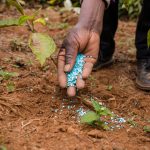Varthur Narayana Reddy, a highly influential figure in Indian organic farming, suggested several practices for improving soil fertility, especially in the context of smaller farms. These practices align with the broader principles of organic farming and can be highly effective in transforming barren land into productive land.
Here’s a basic step-by-step guide based on Reddy’s approach:
Step 1: Assess the Land (Timeline: Start Now)
Begin by conducting a thorough analysis of the land. This includes understanding the type and quality of the soil, the climate of the area, local plant and animal life, as well as water availability and quality. A soil test can provide valuable information about nutrient levels and pH of the soil.
Step 2: Plan for Diversity (Timeline: Concurrent with Step 1)
Reddy was a strong advocate for mixed cropping. This practice involves planting a variety of crops at the same time. Plan for a mix of crops that are well-suited to your climate and soil type. The crops should be selected to complement each other, and could include a combination of grains, vegetables, and fruit trees.
Step 3: Soil Improvement (Timeline: 1-3 Months Before Planting)
Prepare the land by introducing organic matter. This could include green manure (cover crops grown specifically to be plowed back into the soil), compost, or aged manure.
Step 4: Planting Cover Crops (Timeline: 2-3 Months Before Main Planting)
Consider planting a fast-growing cover crop that can be turned into the soil before planting your main crops. This adds organic matter and nutrients to the soil, and also helps control weeds.
Step 5: Preparation for Planting (Timeline: Start of Growing Season)
Plant the crops based on your plan, ensuring that each type of plant has the appropriate space and sunlight conditions. Consider intercropping methods to make efficient use of space and resources.
Step 6: Maintenance (Timeline: Ongoing)
Maintain the land by watering appropriately, managing pests through natural methods, and consistently adding organic matter to the soil.
Step 7: Harvest (Timeline: Depending on the Crops)
Harvest crops as they mature. With mixed cropping, you may have a staggered harvest as different crops will be ready at different times.
Step 8: Post-Harvest (Timeline: After Harvest)
After harvest, return plant residues to the field. This helps to increase organic matter and nutrients in the soil.
Remember that organic farming requires an understanding of local conditions and careful observation. The above steps provide a general guideline based on Narayana Reddy’s philosophy, but the specific practices may need to be adapted to suit your local conditions. Also, transforming barren land into fertile, productive land can take time. Be patient and persistent, and over time you will see improvements in soil health and productivity.












